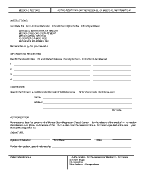

X. TERMINATION OF A PROTOCOL
Terminating a Protocol
A protocol is regarded as terminated when subject enrollment and subject follow-up are discontinued. A protocol may be terminated in any one of the following ways:
- The PI submits form NIH-1195-1, "Clinical Research Protocol: Continuing Review Application," along with a brief written summary of the protocol, its results, and accrual data, indicating termination under "Action Requested."
- The PI requests termination through a memorandum to the Institute Clinical Director and IRB Chair. The memorandum must include the number of patients accrued since the last continuing review of the protocol.
- The IRB, Institute Clinical Director, or CC Director terminates the protocol in the interest of patient health or welfare.
- The IRB, OHSR, or Medical Record Department Director terminates the protocol when the PI fails to submit the protocol for continuing review.
After receiving the approved termination application or request, the PCSC staff removes the protocol number, protocol record, protocol abstract, and protocol consent and assent documents from the MIS, the PROTRAK data base, and the World Wide Web. The PI is responsible for assigning patients to inactive status in the MIS or placing them on another active protocol. The PCSC staff retains the original NIH-1195-1 form or the termination memorandum and sends copies to the PI, PC, and the RSC (if applicable). A PCSC staff member's signature on the NIH-1195-1 form or termination memorandum completes the termination of the protocol.
Informing Research Subjects
When terminating a protocol, an important responsibility of the PI is properly informing subjects. Patients who have been in a masked (blinded) study should be told what treatment they have received. If possible, each participant should be given a synopsis of the outcome of the protocol and its potential meaning for the future.
Most important, the participants must understand poststudy arrangements. Where will they be followed? If at the CC, does that include all of their medical problems or only those that are "study related"? If follow-up is not at the CC, to whom should their records be sent? The "Physician to Receive Reports" listed on the admission record receives copies of discharge summaries from inpatient admissions, but no outpatient information goes out automatically. Thus, research participants must complete form NIH-527, "Authorization for the Release of Medical Information," (figure 15) if they wish to have information sent to anyone other than the "Physician to Receive Reports" listed on the admission record. The completed NIH-527 form should be forwarded to the Medicolegal Section of the Medical Record Department.
Figure 15: NIH-527-- Authorization for the Release of Medical Information
The overall objective is to ensure that those responsible for the patient's well-being are thoroughly, accurately, and promptly informed. This can be done in writing or by telephone; any such calls should be briefly described in the progress notes of the patient's medical record.
The PI should forward all records and documents pertaining to the care of a patient at the CC to the Medical Record Department for placement in the patient's permanent medical record. The PI should retain all research records and documents pertaining to the protocol for at least 3 years after the protocol is terminated, as called for by the MPA.
Contact Form
- About Medtran
- Quality control
- Contact us
- Jobs
- Terminology
- Site map
- Confidentiality
- Personal data protection
- Disclaimer

